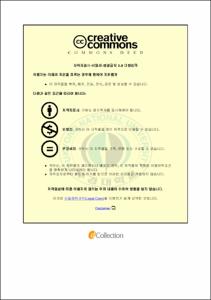부분 안정화 지르코니아의 열처리에 의한 균열치유 및 부식 특성
- Abstract
- Zirconia can be more easily sintered than other ceramics. Zirconia has good thermal resistance and low heat conductivity. Therefore, zirconia can withstand sudden temperature changes. Zirconia has good corrosion resistance, because it has wide chemical stability from acid to alkaline. Zirconia has good material characteristics, such as high strength, hardness, and abrasion resistance. So, the physical and mechanical properties are good. Though it received attention as a heat-resistant material, its application has been limited in scope because of the volume change which is due to the phase transition from monoclinic to tetragonal at approximately 1373 K. A few percentages of the oxides of calcium or yttrium stabilize the zirconia. It has been used in many fields.
However, because the fracture toughness of zirconia is lower than that of polymer materials and metal materials, its reliability is low. Many studies are being conducted in order to solve the brittle nature of ceramics: (1) Toughening by microstructure control and fiber/particles dispersion, (2) detection and repair of crack by non-destructive testing, and (3) the crack-healing method.
This paper has evaluated mechanical properties, crack-healing behavior, and the effect of shot-peening and rolling contact fatigue behavior. The six kinds of specimens used were; Partially Stabilized Zirconia (Z) and five kinds of zirconia composite (ZS, ZST1, ZST2, ZST3, ZST5) with SiC and TiO2 in order to give the self-crack-healing ability. The ZST3 specimen was evaluated for corrosion properties, and to compare, silicon carbide (SiC) was also used to evaluate the corrosion characteristics.
There was not a big difference between the vickers hardness of 6 kinds of zirconia ceramics. The bending strength of zirconia (ZS) with SiC 10 wt.% was reduced by about 56%. The zirconia specimens (ZST1, ZST2, ZST3, ZST5) with SiC 10 wt.% and a small amount of TiO2 were reduced by about 18 ~ 33 wt.%. The bending strength of the ZS specimen rapidly degraded, but the zirconia specimens with TiO2 (ZST1, ZST2, ZST3, ZST5) showed improved strength. So, it was determined that it is affected by the crystallization due to the addition of SiC and TiO2. Although the Z specimen hasn't got crack healing properties, the zirconia specimens (ZS, ZST1, ZST2, ZST3, ZST5) with SiC and TiO2 showed crack healing properties. Optimal healing conditions did not show micro-cracks on the surface after heat treatment. Optimal healing conditions are 5 hrs in 1073 K at ZST3 specimen that is recovered like strength of smooth specimen. Although Z specimen didn't show micro-cracks on the surface, four kinds of zirconia specimens (ZS, ZST2, ZST3, ZST5) did show micro-cracks. Thus, it would be determined that was to the phase transition of Partially Stabilized Zirconia by destabilization due to the addition of SiC and TiO2 and the difference in thermal expansion coefficient of ZrO2, SiC, TiO2. In the Shot peening treatment, Vickers hardness of the Z and ZS specimen were improved from the SP180, and decreased from SP300. The ZST3 specimens were all decreased from the SP180 and SP300. However, the bending strength showed different tendencies depending on the specimen. The bending strength of the ZS specimen increased approximately 2 times, while the ZST3 specimen decreased. In the zirconia specimens (Z, ZS, and ZST3) with the SP treatment, crack propagation was suppressed by the surface micro-cracks and residual stress, and the bending strength of cracked specimens increased. This is due to the effect of compressive residual stress by the SP treatment. Although the rolling contact fatigue strength of the smooth zirconia specimens (Z, ZS, ZST3) were decreased by the SP treatment. This is due to an increase in surface roughness by SP treatment. In the case of contact rolling fatigue strength, the effect of surface roughness is greater than the compressive residual stress. Although corrosion did not occur on the zirconia specimens, regardless of acid and alkaline solution, corrosion did occur when applying SiC.
- Issued Date
- 2014
- Awarded Date
- 2014. 2
- Type
- Dissertation
- Publisher
- 부경대학교
- Affiliation
- 대학원
- Department
- 대학원 기계공학학ㆍ연협동과정
- Advisor
- 남기우
- Table Of Contents
- 목 차
Abstract
제 1 장 서론 1
1.1 본 연구의 배경 및 목적 2
1.2 본 논문의 구성 및 개요 20
제 2 장 재료 및 실험 방법 21
2.1 재료 및 분말혼합방법 22
2.2 소결(Sintering) 24
2.3 시험편 제작 24
2.4 실험방법 27
제 3 장 기계적 성질 및 조직 특성 39
3.1 비커스 경도 40
3.2 굽힘 강도 42
3.3 조직 관찰 44
3.4 XRD 분석 47
제 4 장 균열 치유 특성 49
4.1 균열 치유 전과 후의 균열부 및 표면 관찰 50
4.2 균열 치유 조건에 따른 상온 굽힘 강도 64
4.3 균열 치유 처리에 따른 상전이 78
제 5 장 쇼트 피닝 (shot peening, SP) 표면 처리 특성 88
5.1 SP 처리 전과 후의 조도 89
5.2 SP 처리 전과 후의 비커스경도 92
5.3 SP 처리 전과 후의 굽힘강도 94
5.4 SP 처리 전과 후의 균열 발생 거동 96
5.5 SP 처리 후 무결함화 특성 100
5.6 SP 처리 전과 후의 회전 접촉 피로 강도 비교 103
5.7 SP 처리 전과 후의 잔류 응력 비교 117
제 6 장 부식 특성 119
6.1 부식 특성 120
6.2 부식 표면 성분 분석 128
6.3 SiC 세라믹스의 전기화학적 부식 반응 133
6.4 부식재의 굽힘 강도 135
6.5 전기화학적 조사 139
제 7 장 결론 144
참고문헌 148
발표 논문 목록 155
감사의 글 156
- Degree
- Doctor
- Appears in Collections:
- 대학원 > 기계공학학연협동과정
- Files in This Item:
-
-
Download
 부분 안정화 지르코니아의 열처리에 의한 균열치유 및 부식 특성.pdf
기타 데이터 / 8.67 MB / Adobe PDF
부분 안정화 지르코니아의 열처리에 의한 균열치유 및 부식 특성.pdf
기타 데이터 / 8.67 MB / Adobe PDF
-
Items in Repository are protected by copyright, with all rights reserved, unless otherwise indicated.